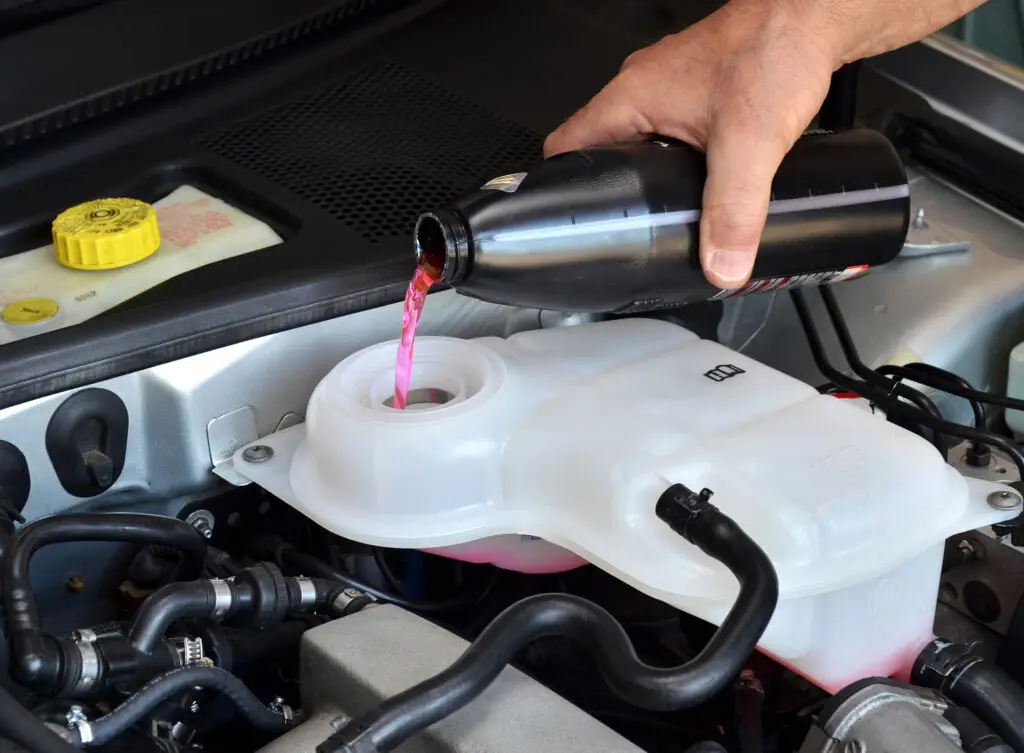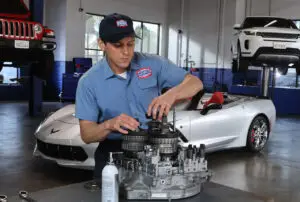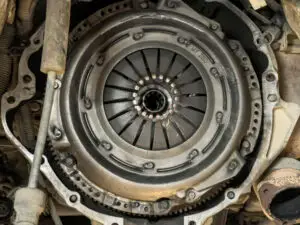A healthy transmission makes a happy driver. Not only do you enjoy better performance, but you’ll also extend the life of your vehicle overall by maintaining your transmission properly. Regular services done by a professional mechanic, as well as building the right habits around your vehicle, help prevent excess wear and tear that can lead to transmission problems.
Essential Maintenance Services for Every Type of Transmission
Each vehicle comes with its own set of recommended maintenance services to help keep important systems like the transmission healthy. Whether you drive an automatic or a manual transmission car, schedule maintenance at regular intervals. Though there’s a general rule of thumb for each service, check your owner’s manual for manufacturer-specific recommendations. Each of these will help keep your transmission operating smoothly and efficiently.
Annual Transmission Inspections
One of the best steps you can take toward a healthy transmission is scheduling inspections with a professional mechanic at least once a year. This allows them to check for signs of leaks or wear in the system that may have gone unnoticed, as well as check the level and condition of the transmission fluid. The earlier any issues are fixed, the less likely you are to deal with major repairs — and the more you’ll extend the life of your transmission.
Though you can wait and look out for symptoms or changes in performance from your vehicle, professional mechanics know best what to look for so that any repairs can be handled as soon as possible, ultimately preventing avoidable wear, tear, and damage.
Automatic Transmission Fluid Replacement

Check your transmission fluid regularly. In most common cars on the road, it’s easy to do using the transmission fluid dipstick. This preventative care helps catch if there’s a leak, the system is overheating, or if you’re overdue for fluid replacement. Automatic transmission fluid is thinner than manual transmission fluid because its key roles are lubrication and easy flow through the system.
The recommended interval for replacement of transmission fluid is roughly every 30,000-100,000 miles for automatics. However, some vehicles have “lifetime fluid” that doesn’t need to be changed unless there’s an issue with your transmission. Check your owner’s manual for your vehicle’s specific recommendations and stay proactive by keeping an eye on your transmission fluid.
Transmission Filter Replacement
Not all vehicles have a transmission filter. However, if your vehicle does, it’s important to have it replaced regularly. This part helps prevent debris and contaminants like fine metal shavings from circulating through the transmission while you drive. Not only does this impact the performance of your car, but regular replacements will also help prevent contaminants from speeding up wear and tear on inner components of your transmission, such as solenoids or gear parts.
A good rule of thumb is to have the filter replaced each time the fluid is replaced or flushed. Check your owner’s manual or consult a mechanic to find out whether your vehicle has a transmission fluid filter.
Manual Transmission Fluid Replacement
The role of transmission fluid is slightly different in manuals. Like automatic transmission fluid, it helps lubricate moving components, which minimizes friction and heat within the system. In general, manual transmission fluid is thicker than the fluid used in automatic transmissions, which helps with its lubrication capabilities. Manual transmissions are more mechanical than automatics and proper lubrication will slow wear and prevent damage to gear parts.
Count on having your manual transmission fluid replaced every 30,000-60,000 miles. However, as with any other maintenance, check your owner’s manual and know that your driving habits and climate can impact how often fluid replacement is necessary for your vehicle.
Manual Transmission Clutch Service
Though not technically part of your car’s transmission, the clutch is essential to a well-functioning manual transmission. This component is responsible for disengaging the transmission from the engine so that you can easily shift gears without causing any damage. Over time, the clutch will gradually wear out from this regular strain. On average, your clutch should last about 60,000 miles, though it’s possible that range can extend from 20,000-150,000 miles.
The brand, your driving habits, and the climate where you live can all impact the lifespan of your clutch. However, having a professional mechanic inspect your car’s clutch at least once a year after you reach 20,000 miles will help prevent surprise problems and excess wear or damage.
Cooling System Service & Coolant Replacement

Your car’s cooling system is closely related to the health of both your transmission and engine. While your car is running, the engine and transmission generate heat that needs to be dissipated into the environment — this is done by coolant flowing through the cooling system. Regularly check coolant level and condition at home to avoid problems like overheating, which is one of the most common causes of serious transmission trouble. However, it’s best to also schedule cooling system services at least once every two years.
Keep Your Transmission Healthy By Visiting Your Local AAMCO
At-home car care is no replacement for services by a professional mechanic, especially when it comes to your transmission. By keeping your car’s transmission healthy, you’ll enjoy optimized performance, stay safer on the road, and extend the life of your transmission and vehicle overall. Trust the experts at your local AAMCO to take care of your transmission, whether it’s time for maintenance or major repairs. Schedule your appointment with us today!






